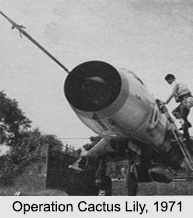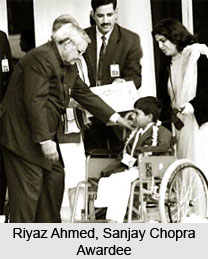 Operation Cactus Lilly was an Independence Movement that broke out in Bangladesh (previously East Pakistan) and was brutally crushed by Pakistani forces. Due to large scale atrocities against them, thousands of Bengalis took refuge in India causing a major refugee crisis. In early 1971, India declared its full support for the Bengali rebels, the “Mukti Bahiniâ€. Indian agents extensively engaged in covert operations to aid them.
Operation Cactus Lilly was an Independence Movement that broke out in Bangladesh (previously East Pakistan) and was brutally crushed by Pakistani forces. Due to large scale atrocities against them, thousands of Bengalis took refuge in India causing a major refugee crisis. In early 1971, India declared its full support for the Bengali rebels, the “Mukti Bahiniâ€. Indian agents extensively engaged in covert operations to aid them.
Beginning of Operation Cactus Lily
Wary of India"s support, The Pakistan Air Force (PAF) on 3rd December 1971 launched a pre-emptive strike on 10 Indian Air Bases at Srinagar, Jammu, Pathankot, Amritsar, Agra, Adampur, Jodhpur, Jaisalmer, Uttarlai and Sirsa. This prompted India to declare a full scale war against Pakistan on the same day. By midnight, the Indian Army, supported by Indian Air Force (IAF), launched a major three-pronged advance into East Pakistan.
Pakistan launched a counter attack against India on the Western front. On 4th December 1971, the 23rd Battalion Punjab Regiment detected and intercepted the movement of the 51st Infantry Brigade of the Pakistan Army near Ramgarh, Rajasthan. The "Battle of Longewala" ensued, during which the company thwarted the enemy advance until the Indian Air Force directed its fighter aircrafts to engage the Pakistani tanks.
Victory of Operation Cactus Lily
In the 1971 war for the Liberation of Bangladesh, Operation Cactus Lily is a landmark conflict in the annals of military history. It was a war that transformed the map of the Subcontinent and saw the birth of a new nation, brought about by the force of Indian Arms. It was an unparalleled and monumental military victory that put India on the military map of the world.
This article is a stub. You can enrich by adding more information to it. Send your Write Up to content@indianetzone.com






